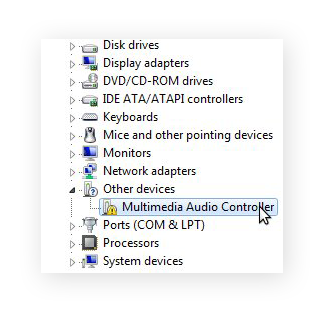Modern PCs are usually equipped with a 'sound card', which allows sounds to be captured and reproduced by the computer. EchoLink relies on the sound card (or built-in equivalent) to exchange audio with other stations on the Internet.
- Download Access Sound Cards & Media Devices Drivers
- Download Access Sound Cards & Media Devices Driver
The most common configuration for EchoLink is to connect a pair of amplified speakers to your computer's 'speaker out' connector, and to plug a microphone into the 'mic in' jack. Many other multimedia programs work with this same configuration.
Playback Volume

You generally want a sound card with signal-to-noise ratio over 100dB, but the best sound cards are in the 124dB range, which is a significant improvement. Channels - A lot of decent, budget-friendly sound cards typically support 5.1 channel audio, but you can spend a little more to get one that can handle 7.1 surround sound. Sound Card For Windows 10 free download - Sound Card Analyzer, PDF Reader for Windows 10, Facebook for Windows 10, and many more programs.
The Windows operating system includes a utility program for adjusting the levels, or volume, of sound going in and out of the sound card. You can access this utility, called Windows Volume Control, by double-clicking on the small loudspeaker icon near the bottom right-hand corner of your screen. You will see a set of 'sliders' similar to the diagram below.

Be sure the 'Volume Control' and 'Wave' sliders are about halfway up, and the 'Mute' box is not checked for either one. You may wish to check Mute for all other sliders, or slide them down to the bottom, to prevent interference.
Your system may use names other than Volume Control and Wave, such as Master Volume and Wave Out.
Recording Volume
Download Access Sound Cards & Media Devices Drivers
A separate set of controls sets the levels, or volume, for the microphone. To access these controls, follow the steps above for Playback Volume, and then do the following:
- From the Options menu, choose Properties.
- In the section marked 'Adjust volume for', choose 'Recording'.
- Choose OK.
You will see a different set of 'sliders', similar to the diagram below.
The Recording Volume controls vary considerably from computer to computer. In the example shown above, there are separate controls for Line and Microphone. If you have a microphone connected to the computer's mic jack, slide the Microphone slider halfway up and check the Select box for it. Your computer may also have a 'master' recording slider; if so, move it halfway up. Move all other sliders to the bottom to prevent interference.
If you are using EchoLink in Sysop mode, you will probably have your receiver's audio connected to the computer's Line In connector, rather than Mic. If so, raise the Line slider, and lower (or de-select) the Microphone slider.

Monitoring Your Levels

While you are speaking with another station using EchoLink, watch the Audio Level Meter near the bottom of the screen as you speak. The meter should jump at least into the yellow area on voice peaks, but should not go full-scale. Adjust the Microphone slider (described above), if necessary.
Download Access Sound Cards & Media Devices Driver
